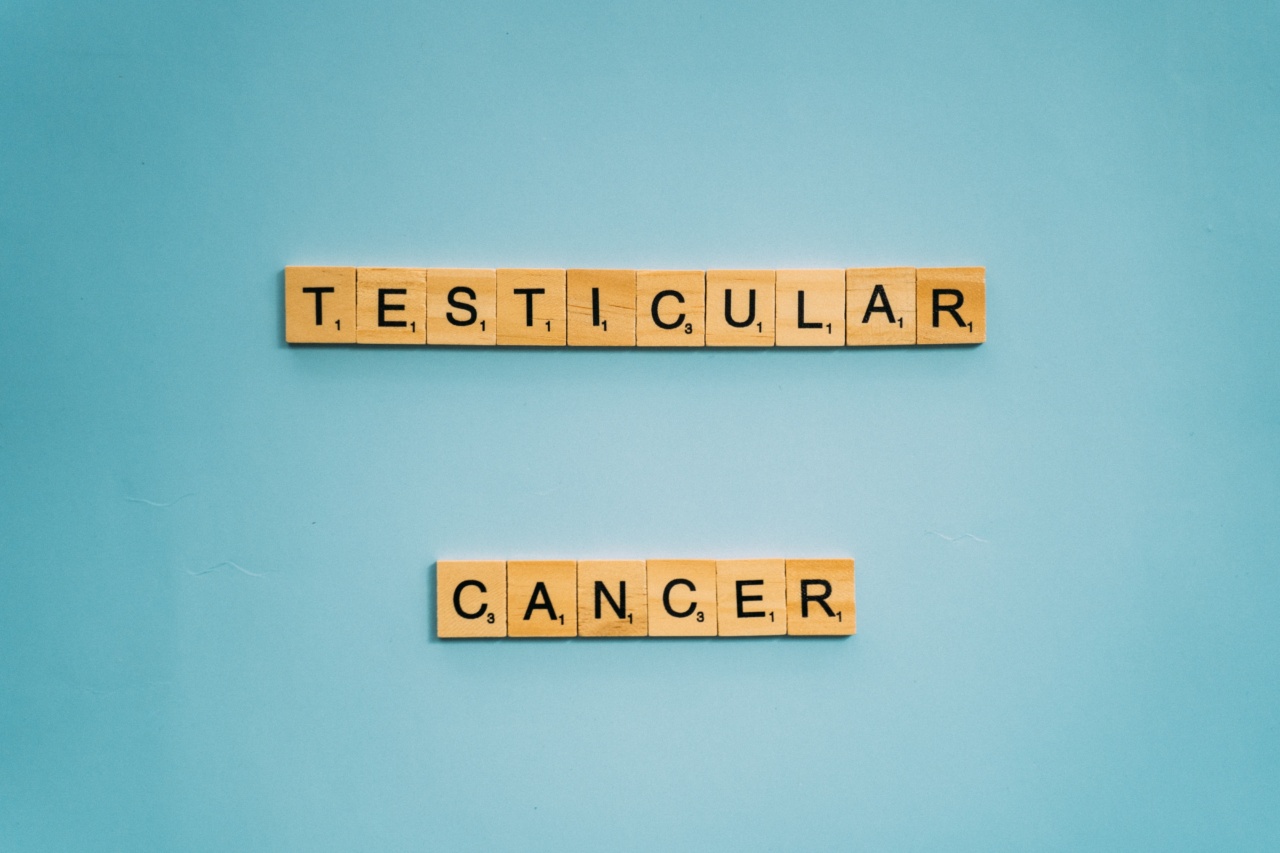Testicular cancer is a relatively rare form of cancer that develops in the testicles, which are the male reproductive organs responsible for producing sperm and testosterone.
While testicular cancer accounts for only about 1% of all cancers in men, it is the most common cancer in males between the ages of 15 and 35. Understanding the risk factors associated with this disease and the importance of early detection is crucial for improving outcomes and saving lives.
Risk Factors
While the exact cause of testicular cancer is unknown, certain risk factors have been identified that can increase the likelihood of developing this disease.
It is important to note that having one or more risk factors does not necessarily mean a person will develop testicular cancer, but it can raise the individual’s risk.
1. Age
Testicular cancer is most commonly diagnosed in men between the ages of 15 and 35. Although it can occur at any age, the risk decreases significantly after the age of 40.
2. Undescended Testicle
Men who have a condition called cryptorchidism, where one or both testicles fail to descend into the scrotum during fetal development, have an increased risk of developing testicular cancer.
The risk is highest when the undescended testicle remains untreated after the age of one.
3. Family History
If a close relative, such as a father or brother, has had testicular cancer, the risk for developing the disease is higher. However, the majority of men with testicular cancer do not have a family history of the disease.
4. Personal History
Men who have previously had testicular cancer are at a higher risk of developing cancer in the other testicle. Regular check-ups and self-examinations are important for early detection and monitoring.
5. Race and Ethnicity
Caucasian men have a higher risk of testicular cancer compared to men of other races, particularly African-American and Asian-American men. The reasons behind this disparity are still not fully understood.
6. Klinefelter Syndrome
Men with Klinefelter syndrome, a chromosomal disorder characterized by the presence of an extra X chromosome, have an increased risk of testicular cancer. Regular screenings are recommended for early detection in these individuals.
7. Testicular Developmental Anomalies
Men born with abnormalities in testicular development, such as an irregularly shaped testicle or the presence of other tissue within the testicles, may be at a higher risk of developing testicular cancer.
8. HIV Infection
Individuals infected with the human immunodeficiency virus (HIV) have a greater risk of developing testicular cancer, likely due to weakened immune systems. Regular check-ups and screenings are important for early detection in this population.
9. Hormone Imbalances
Imbalances in hormone production, such as reduced testosterone or increased estrogen levels, may increase the risk of developing testicular cancer.
Regular hormone level check-ups are important, especially for individuals undergoing hormone replacement therapy.
10. Environmental Factors
Exposure to certain environmental factors, such as chemicals or toxins, may contribute to an increased risk of developing testicular cancer.
While the specific substances and their effects are still being studied, it is important to minimize exposure to potential carcinogens.
Importance of Early Detection
Early detection plays a crucial role in the successful treatment of testicular cancer. When diagnosed at an early stage, the chances of a complete cure are extremely high, with a five-year survival rate of over 95%.
However, if the cancer spreads beyond the testicles to nearby lymph nodes or distant organs, the prognosis becomes significantly worse.
Regular self-examinations are an essential part of early detection. Men should become familiar with the normal size, weight, and structure of their testicles to quickly identify any changes or abnormalities.
If any concerns arise, it is important to consult a healthcare professional promptly.
In addition to self-examinations, routine medical check-ups are also crucial.
A healthcare provider can perform a thorough physical examination and may recommend further tests, such as ultrasonography, blood tests, and biopsies, to confirm or rule out the presence of testicular cancer.
By detecting testicular cancer at an early stage, treatment options are more effective and less invasive.
Depending on the stage and characteristics of the cancer, treatment may involve surgical removal of the affected testicle (orchiectomy), radiation therapy, chemotherapy, or a combination of these approaches. After treatment, regular follow-ups and monitoring are essential to ensure any recurrence or new developments are detected early.
Conclusion
Testicular cancer is a relatively rare form of cancer, but understanding the risk factors associated with it is important for early detection.
Age, undescended testicles, family history, personal history, race, Klinefelter syndrome, developmental anomalies, HIV infection, hormone imbalances, and environmental factors are all risk factors that may increase the likelihood of developing testicular cancer. Early detection, through regular self-examinations and medical check-ups, is critical for increasing the chances of successful treatment.
By recognizing the importance of early detection and understanding the risk factors, we can work towards improving outcomes and ultimately saving lives.




























